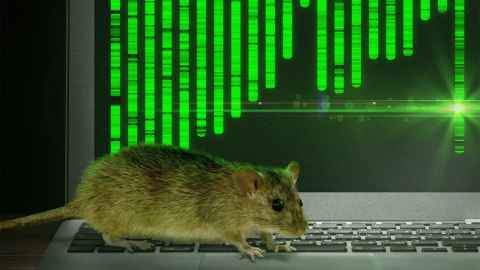Scientists sequence ship rat genome for first time
23 March 2020
A New Zealand – Australia collaboration has produced the first full genome sequence of Rattus rattus (ship or black rat).

This new reference genome – now available to international researchers – will empower scientists working on critical questions of conservation, evolution and disease prevention.
The ship rat has caused species extinctions and dramatic biodiversity loss on every island group around the world, including New Zealand, as well as spreading disease and affecting agricultural production.
“This is an important milestone for New Zealand’s Predator Free 2050 goal,” says Science Strategy Manager Professor Dan Tompkins of Predator Free 2050 Limited, the principal funder of the research.
“It will underpin future work on understanding the origins and dispersal of ship rats, the development of novel control mechanisms such as species-specific toxins and help assess the technical potential of gene technologies.”
The genome (the complete set of an organism’s genetic information) was produced using tissue from a wild rat trapped in the Waitakere Ranges near Auckland.
The initial assembly based on short read technology was produced in late 2015 by University of Auckland researcher, Dr Florian Pichlmüller now a research fellow with Genomics Aotearoa, a collaborative genomics and bioinformatics platform involving nine New Zealand universities and Crown Research Institutes.
“Understanding the genetic makeup of this species enables us to investigate how rats adapt to changing environments and what makes them so successful as invasive predators around the world,” Dr Pichlmüller said.
The New Zealand scientists teamed up with genomic and bioinformatics experts from CSIRO, Australia’s national science agency, to further improve the quality of the genome with state-of-the-art analytical approaches and technologies only recently established in New Zealand.
Collectively the team have assembled one of the highest quality mammalian genomes produced to date.
CSIRO Health & Biosecurity and SynBio Future Science Platform scientist, Dr Rahul Rane, who led the work from across the Tasman, said “the result of the collaboration is one of the most complete mammalian genomes currently available and has enabled new techniques to be transferred to New Zealand researchers.”
Dr Pichlmüller’s doctoral supervisor and collaborator University of Auckland Associate Professor James Russell said “all three of the world’s most widespread and devastating invasive rodents (mice, Norway rat and ship rat) have now had their genomes sequenced, allowing researchers to work on long-term, sustainable control solutions.”
University of Otago’s Professor Neil Gemmell, a principal investigator in Genomics Aotearoa, led the project from the New Zealand end. He said “the collaboration with CSIRO on ship rat had helped Genomics Aotearoa rapidly build the capacity of New Zealand researchers to generate high quality genome assemblies, so that we can more readily contribute to major research initiatives nationally and internationally.”
Media contact
Anne Beston | Media adviser
DDI 09 923 3258
Mob 021 970 089
Email a.beston@auckland.ac.nz